All about knitted blankets
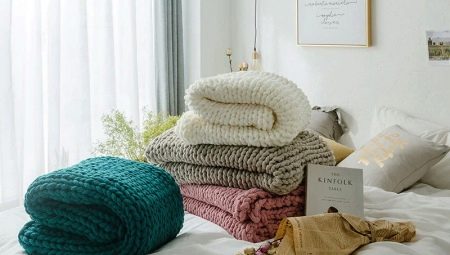
The Scandinavian style is the first thing that is associated with knitted textiles in the interior. Although knitted blankets are used not only in it, the most winning, quoted images introduced the world to the Scandi style. Or rather, he perfectly repeated what he had learned: the traditional decor, which appeared not even in the last century, helps to create coziness and a special home atmosphere. But you still need to be able to choose a knitted blanket, or maybe do it yourself.

Peculiarities
A knitted blanket on the bed is always cozy and stylish. Formats, patterns, technologies, requirements for the thickness of knitting are changing, preferred shades and ornaments are changing. But the very fact of the charm of such a knitted bedspread remains unchanged.
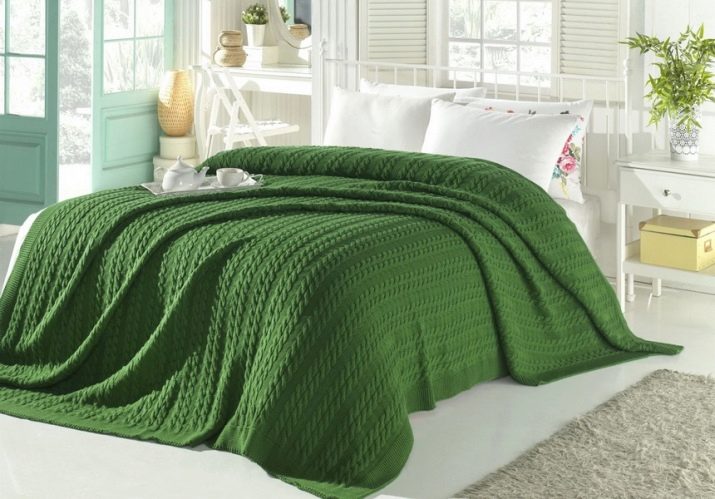
What are the advantages of this product:
- suitable for a bed or sofa in any room - living room, bedroom, nursery;
- ease of care - a certain mode of machine wash and the job is done;
- a large selection of yarn if you want to knit a warm blanket yourself;
- quality control in the case of making a blanket with your own hands - the master is responsible for each row and for each loop, marriage is excluded;
- affordability - for a product that, with proper care, will last for many years, the price is more than adequate.
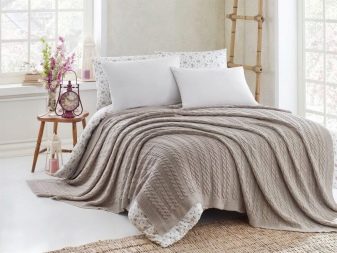
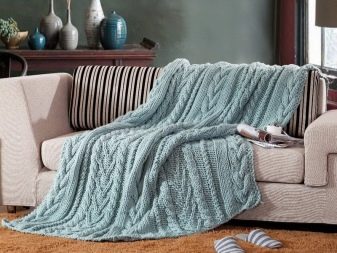
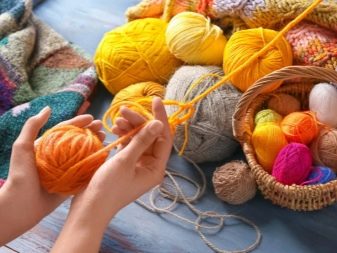
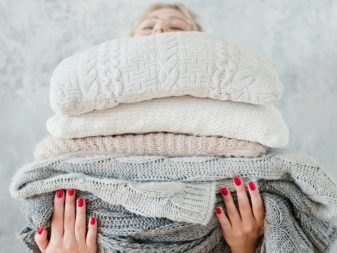
Blanket options 3:
- machine knitting;
- hand knitting;
- hand crocheted.
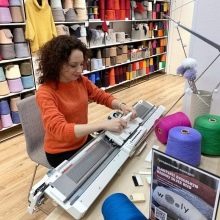


In the first case, the canvas will be more standard, not so unique, but also inexpensive. You can buy a piece of machine knitting and use a tape to process the edges. Silk or satin trim will perfectly border such a product.
Hand knitting is the most popular option. If you take thick yarn and large knitting needles, the plaid can even contact overnight. Although there is usually no rush in such a matter.The simpler the pattern, the neater the bedspread. Baby blankets are usually crocheted, and this is more difficult to do, because it is not so easy to maintain the shape of the product. Crochet is especially important for different types of country style, including Provence.
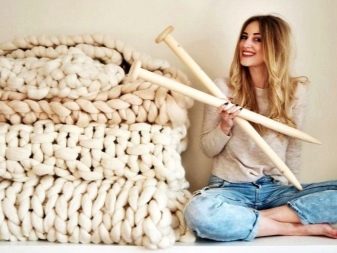
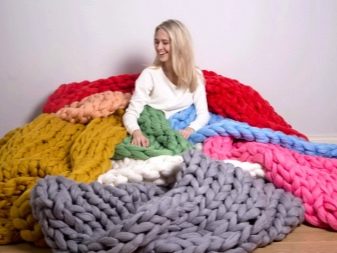
Materials (edit)
What to knit from - that is the question, so that it keeps its shape, and is soft enough, and is considered wearable.
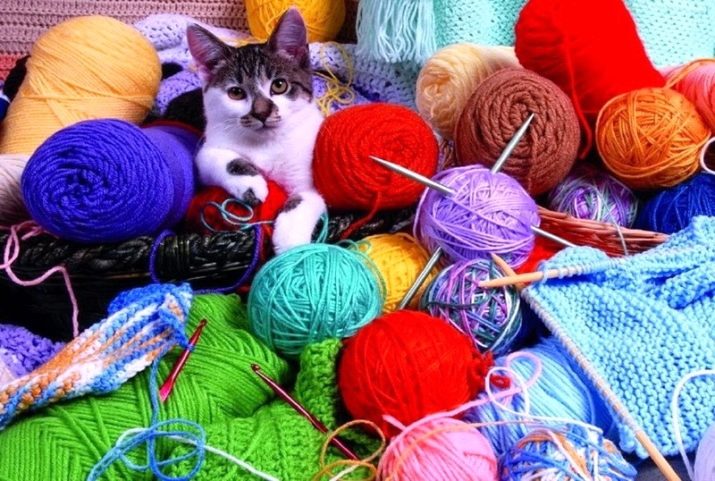
Acrylic
This fiber for yarn is synthetic, it shines pleasantly, shows itself well in use. Acrylic has a strong thread that glides easily on the needles. Beginners often choose acrylic precisely because of the ease of interaction with it. Finished products are not vulnerable to deformation, they are not afraid even of frequent washings.
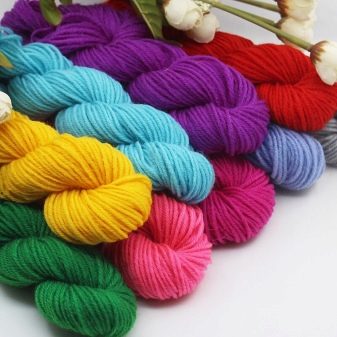
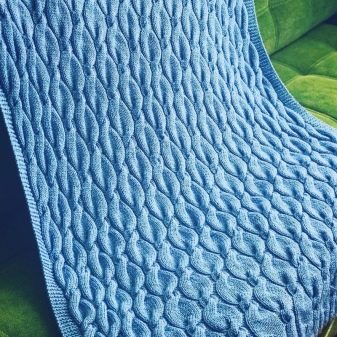
But it is worth noting that acrylic threads are considered coldish, because they do not knit a blanket for the winter and do not buy it. But a bedspread for summer relaxation on the terrace or even for a warm night at home will turn out great.
Wool
Natural fiber, does not need any advertising. The variety of shades is impressive. The thread itself is strong, that is, there will be no problems with knitting. But with the use, not everything is so favorable: a few washings - and the blanket can significantly stretch, just sit down, lose its original appearance. And it's hard for beginners to work with yarn.
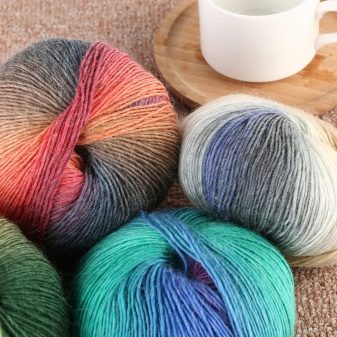
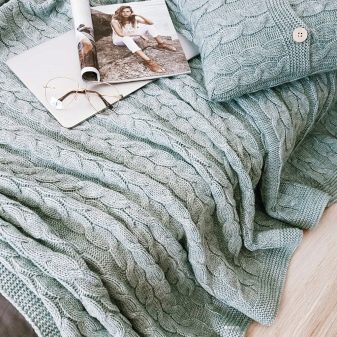
Baby blankets made of pure wool yarn are not knitted because the material is too rough for baby skin.
Mohair
It is considered a combined type of yarn, natural fiber is used together with synthetic components. Mohair things have a special charm - both visual and tactile. Warm blankets with a long pile are obtained from this material, very cozy and warming. Again, this is not an option for beginners. Taking care of mohair is a little harder, but everything is real.
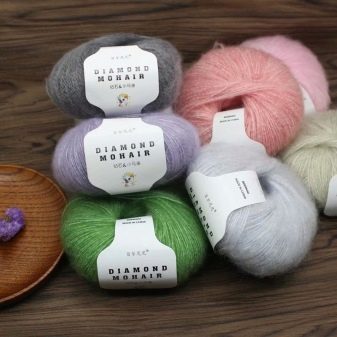
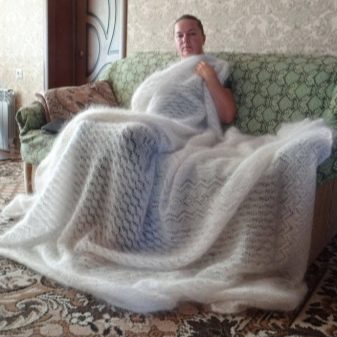
Angora
Soft, fluffy fiber is good for knitting baby blankets. A bright pattern, a very delicate pile attracts many in such textiles. But in the process of use, part of the villi rolls down, and after washing, this fluff needs to be put in order.
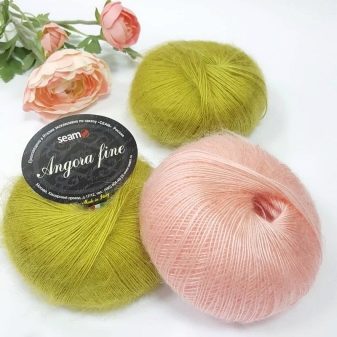
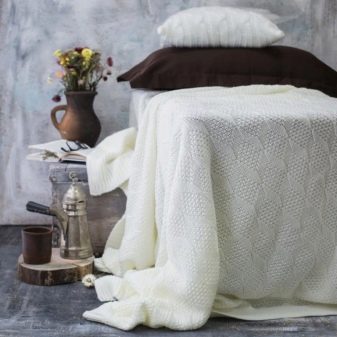
Linen
Vegetable fiber for blankets is not the most popular, but quite a good option. Soft and delicate products can be obtained from this natural material. True, it will not keep warm, which means that it is suitable for use only in summer.
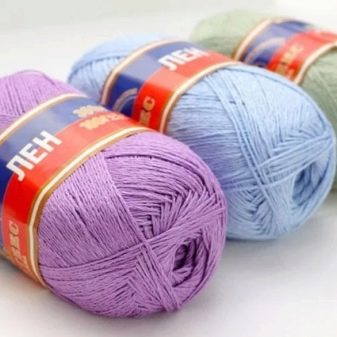
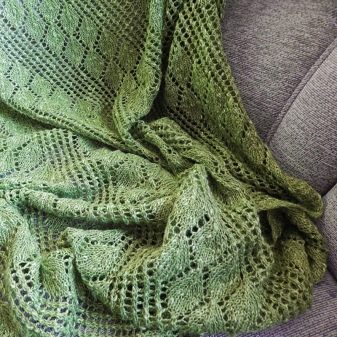
Jersey
An interesting variation on this material can be considered a homemade blanket made from old knitted sweaters. On the one hand, it is a great reason to preserve the memory of once loved things, to give them a second life. On the other hand, it is an economical way to get a new blanket. It can be edged with a trim made of soft fabric or even fur.
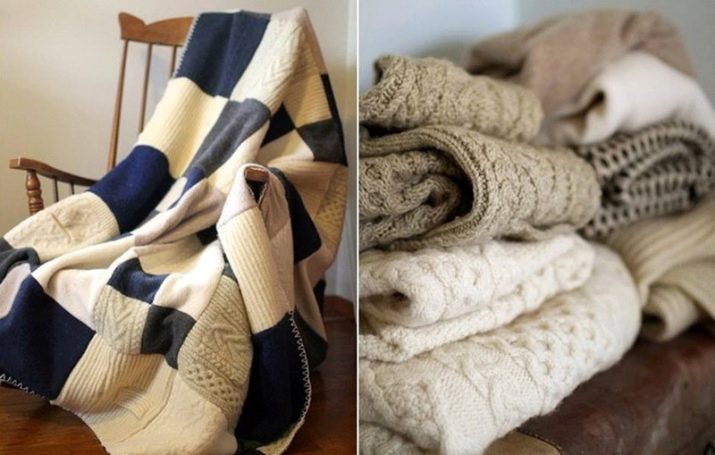
Blankets are made from pom-pom and melange yarns, cotton is used for the backing (if such a side is provided).
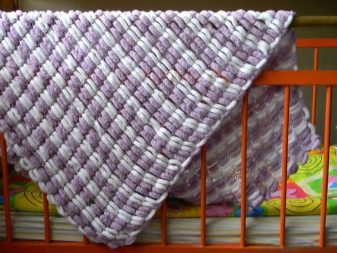
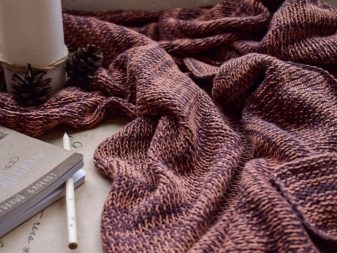
Design
There are techniques that have been used for decades and do not lose their relevance. For example, knitting with a pigtail or from squares. There are patterns that always adorn a textile product - for example, striped bedspreads do not go out of fashion.
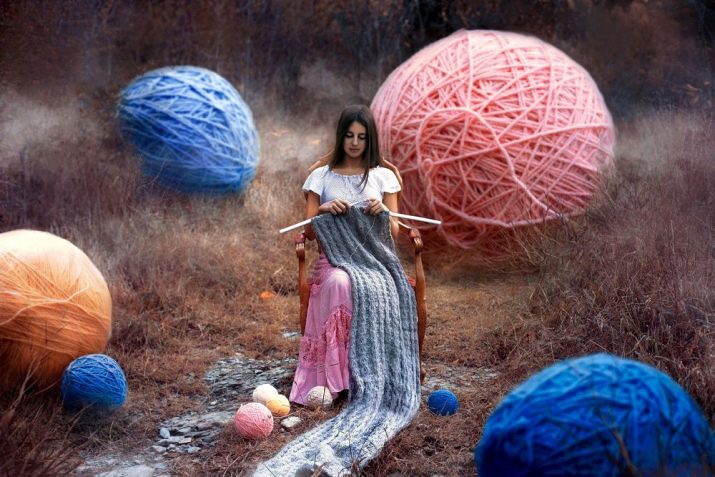
Techniques and patterns
Models can have a large ornament or are based on small knitting. There are models in which there is the inclusion of a volumetric ornament in the drawing. NFinally, blankets with the addition of color images can also be considered fashionable.
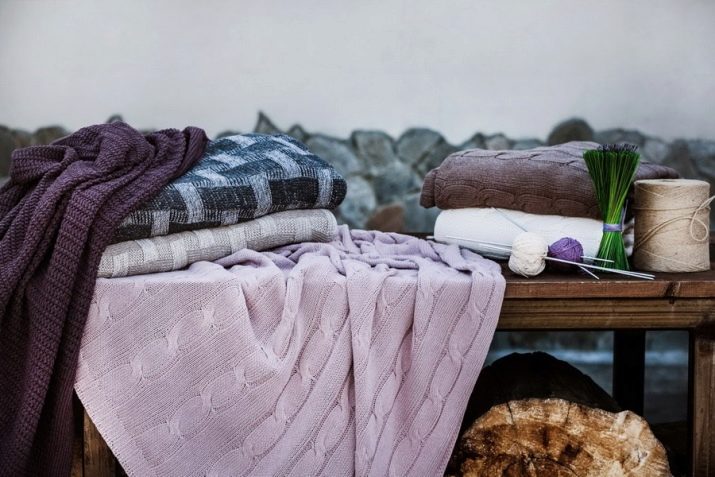
A plaid pattern can be formed using:
- garter stitch;
- openwork weaving;
- braids and plaits;
- volumetric floristic variations;
- non-standard compositions;
- alternation of different loops, front and back.
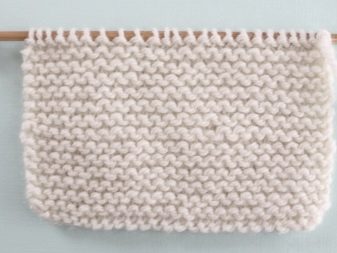
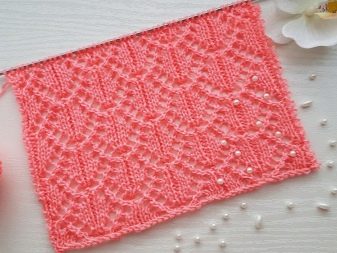
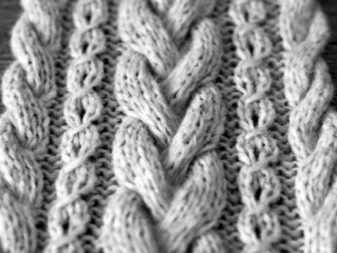
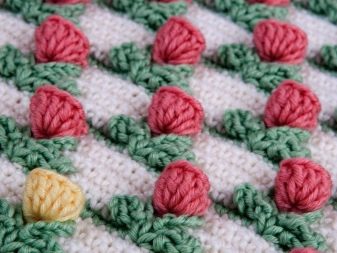
To get an interesting, even unexpected plaid design, there are several difficult techniques to learn.
Will help you get an unusual blanket:
- Tunisian technique, which requires a hook, and as a result, you get a two-level pattern on a dense and plastic canvas;
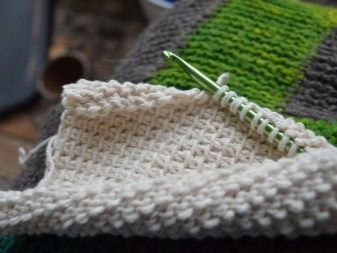

- Bavarian method - also performed with a hook, weaving is carried out in a circle, elements of saturated colors or parts in the form of squares are included;
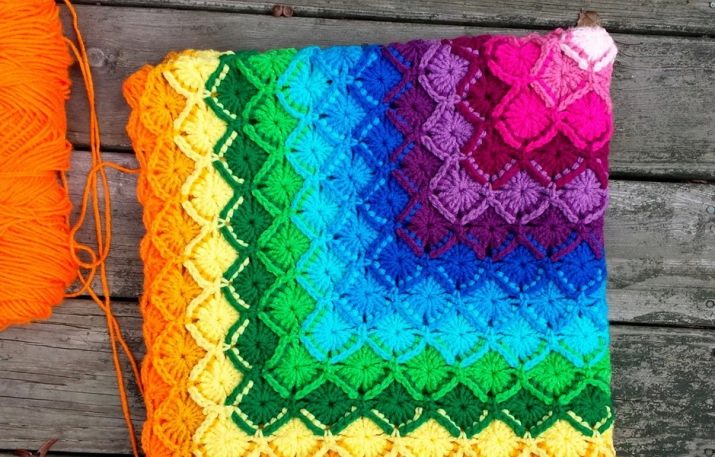
- scandi motifs, as a rule, use two shades and are made with knitting needles (for example, milky and blue or white and gray, mint and beige);
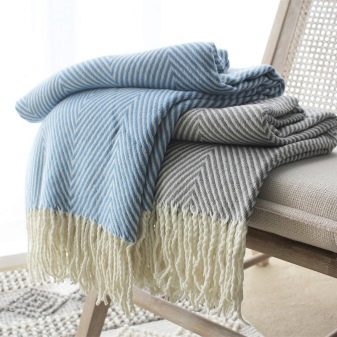
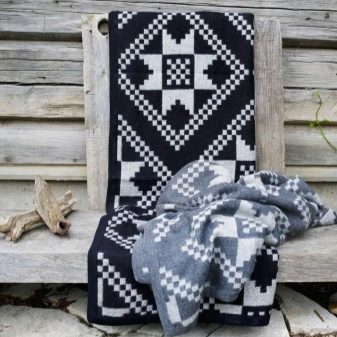
- the double-sided method requires the use of knitting needles with two strands or a crochet hook in the case of one strand;
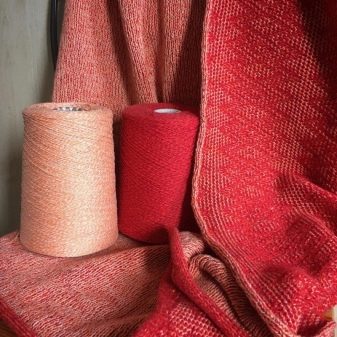
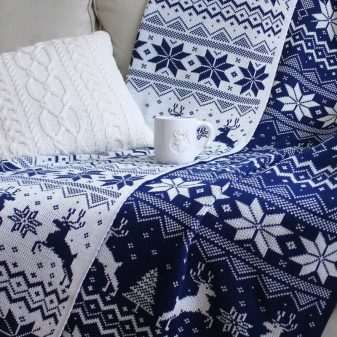
- knitting diagonally - the plaid will acquire a dynamic picture.
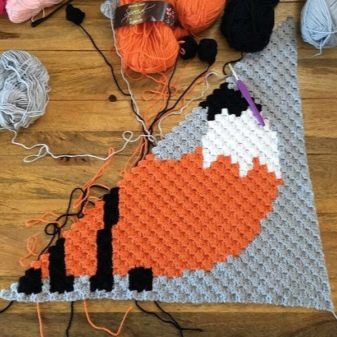
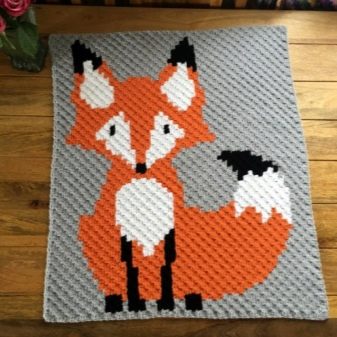
In what interior styles are knitted blankets not used: they can decorate both the natural comfort of Provence, and the cheerful Mediterranean style, and even blankets are used in restrained minimalism. True, as a rule, one color and without any 3D-effects, rarely two-color.
Colors
It all depends only on the desire of the owners and basic ideas about the combination of colors. With a monochromatic, everything is simple: he needs to find an interior consonance. If the room has a background, a base, for example, white walls, gray or wood-colored furniture, the decor can add color. And here you can be bolder: a yellow plaid, blue, green, turquoise, red will look great against a calm background. In a word, you need colored yarn. But the black blanket is more appropriate in the interior, where there is no purpose to place accents through the decor.
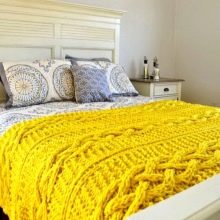
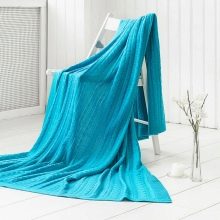
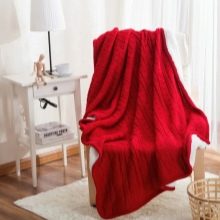
Calm, non-spectral colors are considered universal colors. These are gray, beige, caramel, as well as various variations of chocolate (you can use sectional yarn). And in Scandi-style, and in hygge, and in cinema-folk, and in eco-boho, it is precisely these types of blankets that will be convincing.
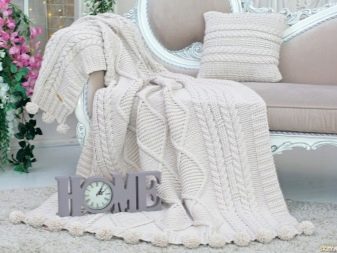
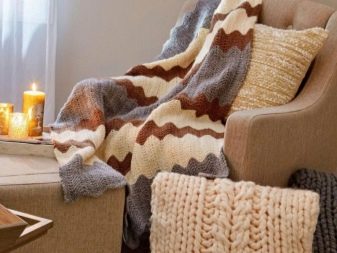
Dimensions (edit)
There are standard sizes that you should be guided by. For example, a single blanket is considered to be a product with a width of 120-140 cm and a length of 180-220 cm. Plaid 220x240 is already wide, although not huge (surprisingly, it can be larger). For example, the Euromaxi blanket has a length of up to 300 cm and a width of up to 280 cm.

How to determine the size of the blanket:
- the length of the bedspread is equal to the length of the bed, the width of the bedspread is equal to the height of the overhang multiplied by 2 - this rule is true for beds with a headboard;
- the length of the bedspread is equal to the length of the bed plus the height of the overhang, and the width is equal to the width of the bed plus the height of the overhang multiplied by 2 - this rule applies to beds without a backrest in the legs.
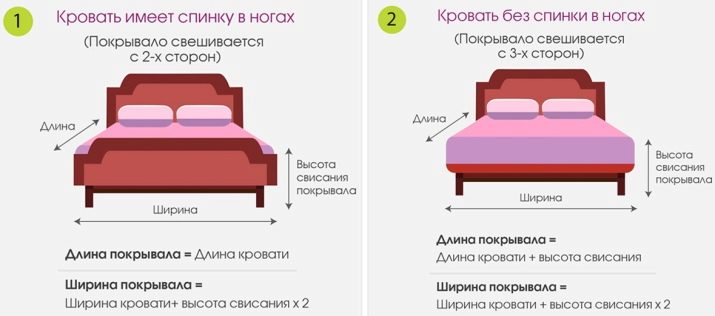
All this is also true for measuring baby blankets. But for very small, newborns, the optimal size of the bedspread will be 700 by 100 cm, if you want to slightly extend the life of the blanket - 80 by 110 cm.The limit is 90 by 120 cm.

How to choose?
The choice is the most interesting and most painful. But even this can be dealt with based on your own taste. And it can be developed with the help of observation.
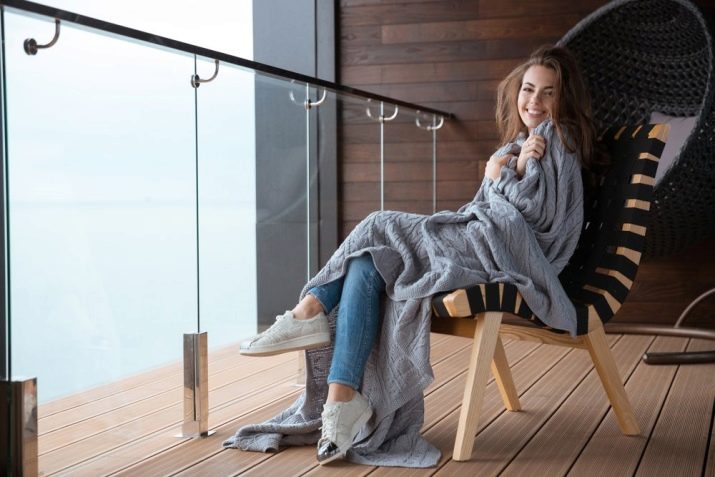
In examples, it looks like this.
- A dusty rose in a serene bedroom. It is worth paying attention to this color of the walls - it is as good as possible as a background against which any shade of furniture decor can look softer, softer, more interesting. The plaid matches perfectly, and the pillows on the bed incorporate other shades used in this interior.
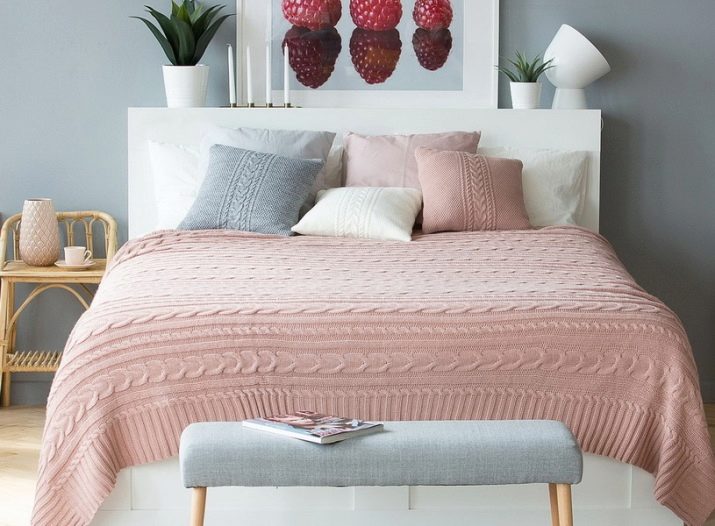
- Very chunky knits are still in vogue and are not going to give up. And who would refuse such beauty, visual delight. Milky shades will be appropriate in any bright bedroom, especially a small one. There is no need to take a radically white, better slightly diluted, with a barely noticeable shade. So the interior warms up.
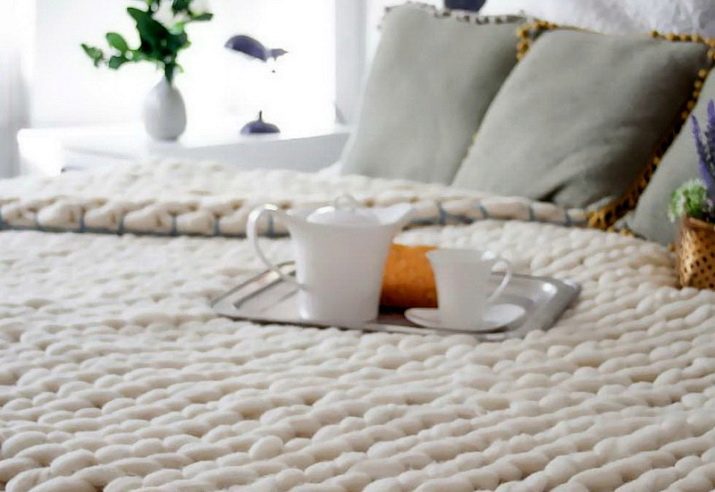
- The gray-beige color is very warm, homely and inviting. It will delight in the summer, calming down from the brightness outside the window, making it possible to focus on relaxation. And in bad weather, in cold weather, it is like a concentration of home comfort, reliability, security. Color psychology works even if a person doesn't really believe in it.
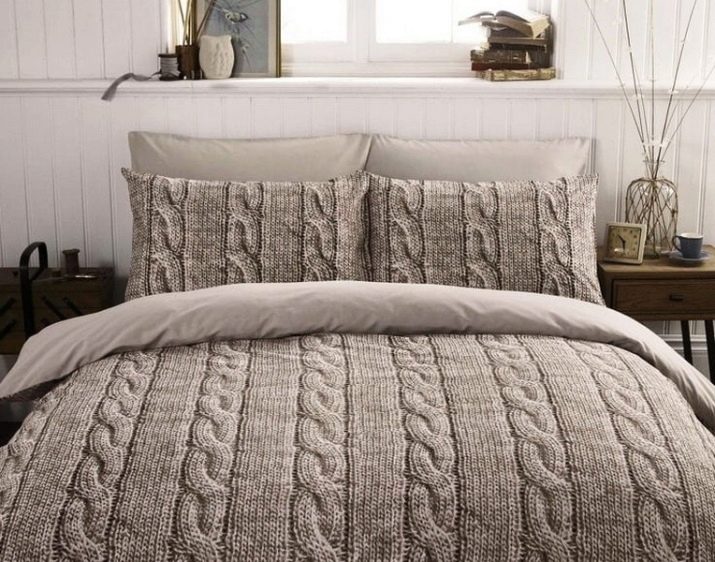
- A striped blanket is a godsend for those who lack a unifying element in the bedroom. That significant that will merge the colors of the floor, walls, furniture, curtains. It can be found just in such stripes. It harmonizes the space very much.
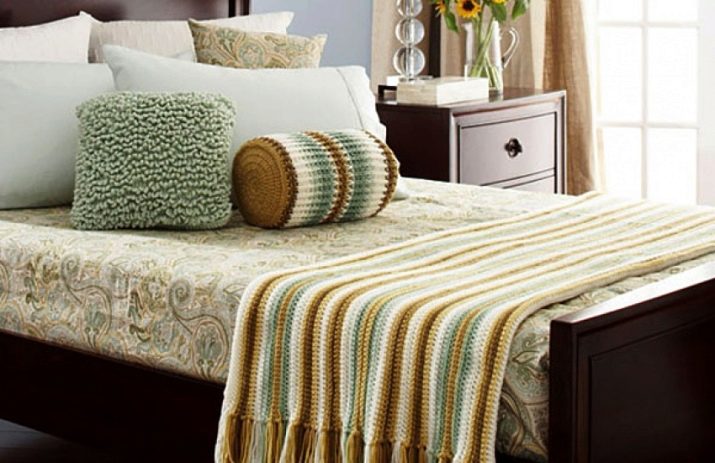
- Another example of a large and light knit. The interior ceases to be boring and sleepy, but at the same time it is not impudent, you do not get tired of it.Eco-friendly, stylish, without the slightest hint of too much color - everything is exactly as it should be in a modern bedroom.
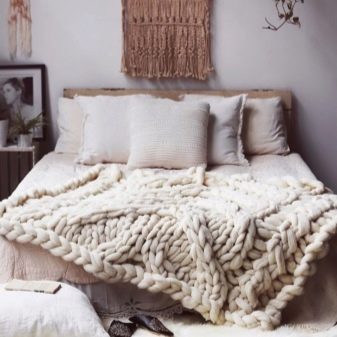
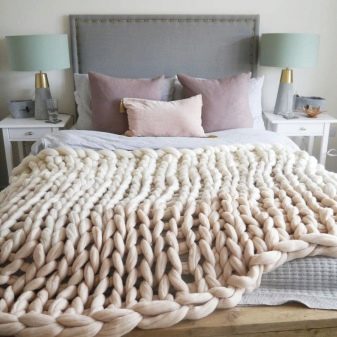
- A pleasant, rather fashionable mustard color in the form of a blanket can also settle in the bedroom. It is warm, warming, but not annoying. He will be able to "make friends" with dark green, brown, with ocher shades, creating a natural symphony - soft, lulling, relaxing.
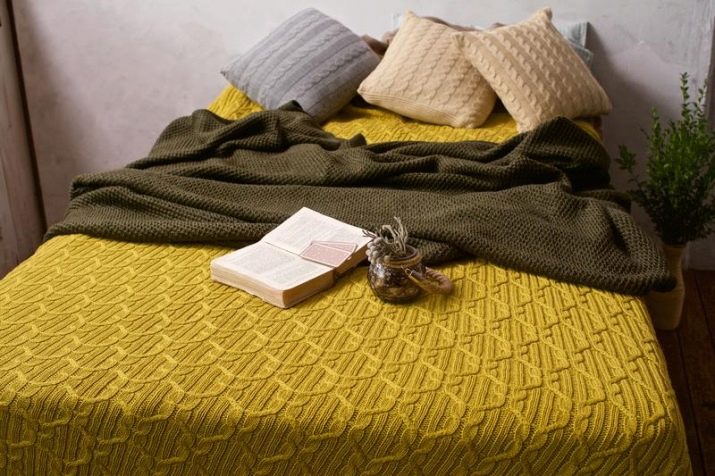
- The color pink is different, and the photo shows one of the most daring versions of it. And this is an option not only for girls' bedrooms. The main thing is that the background in the room does not contradict the obviously soloing color. The right accent for those who want brightness even in the bedroom.
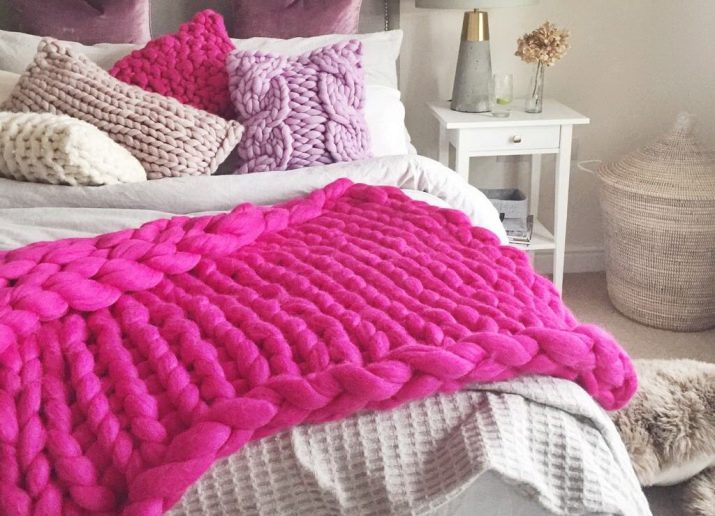
- In this bright, beautiful room with obvious scandi motives, there could be a more active blanket, combined with a carpet, for example. And, perhaps, on some days, on holidays, it changes to this. But this light, thick, large knit remains basic. It won't make the whole bed, but it doesn't have such a mission - if it were bigger, its bulkiness would ruin the whole balance. Modest, stylish, impeccable.
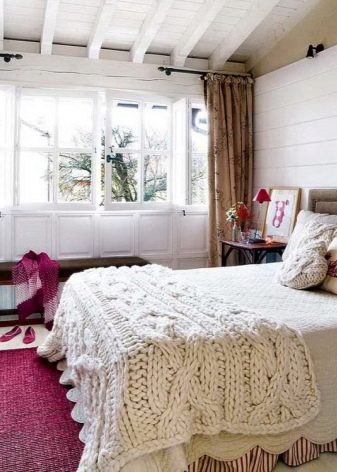
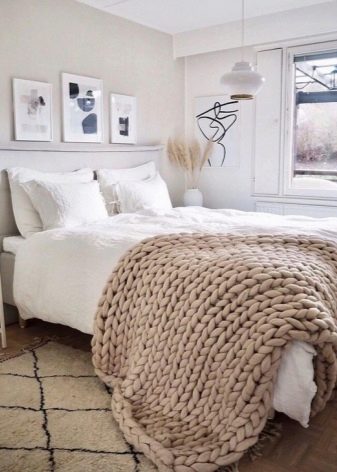
- And here is a bright knitted blanket made of colored fragments, which is incredibly suitable for this bedroom with colorful solutions on the walls. But there is no color selection, because the walls are like a blank sheet, white and allowing color to actively enter the space. Spring, sunny room - suitable for those who want to breathe new, colorful energy into their lives.
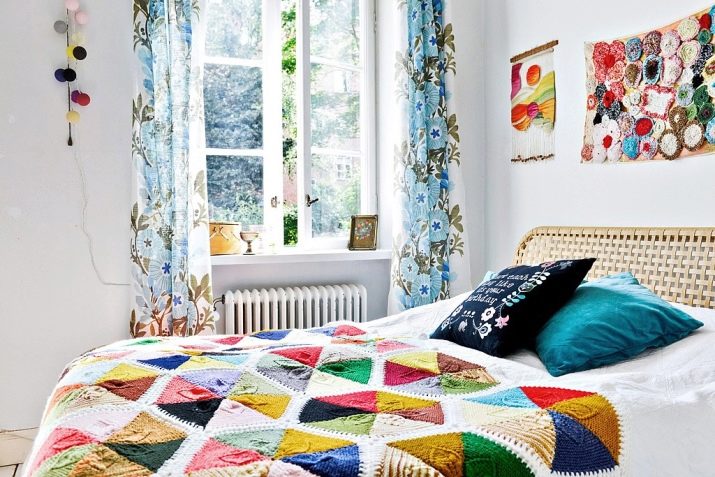
- Light blanket with brown pompoms - a good option for a light, delicate, small bedroom. Pom-poms can be used to match furniture or carpet of the same color.

These examples show what the choice is based on. First of all, it is an ideal integration into the context of an already decorated bedroom. Optimal in color, texture, and expectations. Someone thinks the interior of the room is sleepy, lifeless, coldish, and a blanket may well "wake him up". Or, on the contrary, the blanket should absorb the brightness of the elements of the room, as if uniting them in itself, becoming a connecting link.
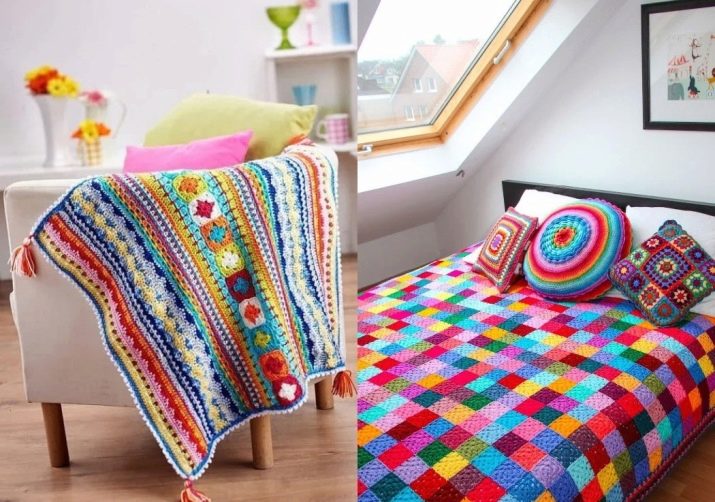
How to care?
The big question is how to make the knitted thing last longer and not be irreversibly damaged. Take stains, for example, against which no thing is immune. If a stain has formed on the surface of the bedspread and has not had time to be absorbed into it, it must be allowed to dry. Haste will allow the dirt or other stain culprit to penetrate deeper into the yarn. Remove dried stains with a soft clothes brush or toothbrush.
If the stain is stubborn and the brush does not work, you will need the help of a liquid stain remover. If it's a colored blanket, only a stain remover without bleach will do. In this case, you cannot rub the contaminated place, you need to remove the stain with water, and then blot this area with a dry soft cloth.
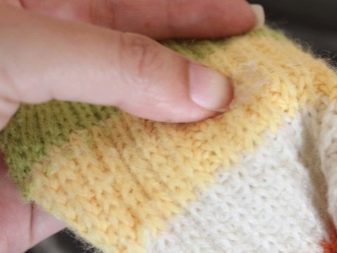

What other rules of care you need to know:
- Handwash - this is soaking a blanket in water, the temperature of which is not higher than 40 degrees. If you use liquid detergents. You need to wash carefully, you should not rub knitted things intensively. You can use a soft sponge during washing.
- After rinsing, which should be repeated, the blanket should be wrung out. Also delicate, of course. The water must be allowed to drain. But at the same time, the product must be protected from sagging. You do not need to twist anything. After push-up, the blanket can be wrapped in fabric (a regular sheet will do), it is she who will take excess moisture from the knitted thing.
- If washing is used in a washing machine, then the water should also not be heated above 40 degrees. All the same liquid detergents are used. They are divided into means for color and for white, this is also taken into account with respect to knitted products. The wash is delicate, which means that the spin can be carried out only at low speeds. Otherwise, it is even worth giving up the machine spinning and performing this stage manually, personally controlling the process.
- Acrylic items are well washed on a delicate machine mode, but for cotton blankets, a more gentle hand wash is preferable.As well as manual spinning.
- Dry a knitted blanket like this: spread it out on a horizontal surface, previously covered with a cloth. Do not hang on a rope or a barbell, do not allow it to take an upright position. It is because of this drying that the blanket sags and is seriously deformed. A white sheet is ideal for bedding, because colored laundry sometimes fades.
- If you want the blanket to dry faster, the fabric underneath should be changed from time to time. If the knitted product has a large enough pattern, when you need to steam the blanket, you should put a terry towel under it - this way the pattern is protected from deformation.
- If the blanket has to be removed somewhere for storage, it could be a bag or a case. It makes sense to protect products made from natural yarn by putting a moth repellent in the storage area.
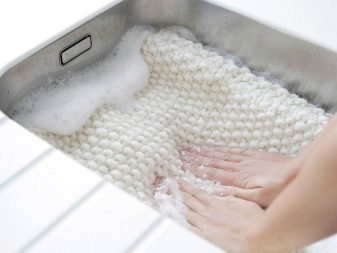
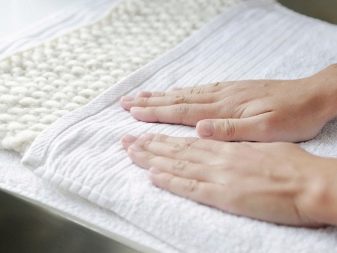
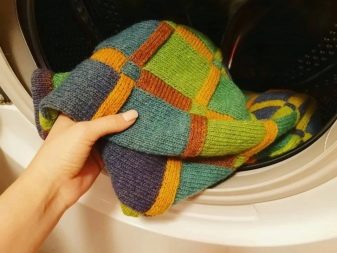
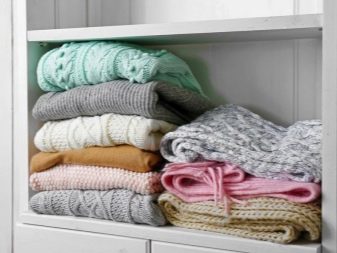
These tips are enough to keep the thing clean, not changing its shape and color, serving for years and pleasing the eye.
For information on how to knit a plush blanket without knitting needles and a hook, see the next video.








